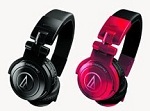 #1 - VOLUME CONTROL
#1 - VOLUME CONTROL
Many people forget this simple tip - don’t set the volume too loud. Some players let users set volume limits so the music never gets too loud. And as tempting as it may be at times, never crank the volume to its maximum.
#2 - BACKGROUND NOISE
We sometimes turn the volume up to drown out background noise such as traffic or chatter. This may help someone relax, but it doesn’t help his hearing.
Noise-cancelling earphones use electronics to minimise background noise significantly so users don’t have to crank up the volume. Larger, closed-back headphones cover the ears entirely and also help to reduce background noise. Other noise reducing alternatives include in-ear headphones and earbuds.
#3 - USING EARBUDS
Earbuds are designed to fit in the ear canal, so they’ll already sound louder than over-the-ear headphones. To compensate for this, remember to reduce the volume when using earbuds to a slightly lower level than usual. If your current earbuds don’t fit that well, consider a pair that fit more snugly. This helps minimise background noise so you don’t have to turn the volume up.
#4 - THE SOUND OF NOISE
Listening to noise levels above 105 decibels (dB) for more than 15 minutes can damage a person’s hearing permanently. It’s about the same as the noise level at a rock concert. An MP3 player with its volume set to maximum can exceed 110db. Even slight increases in volume make a big difference. Every 3dB increase in sound means sound energy is doubled, so it can have a pronounced effect on hearing.
 #5 - THE 60/60 RULE
#5 - THE 60/60 RULE
Some people swear by the 60/60 rule - listen to music at 60 per cent of your player’s maximum volume, for not more than 60 minutes at a stretch. It’s certainly worth following if you want to protect your hearing.
#6 - AUDIO QUALITY
The more compressed an MP3 file is, the lower its quality. If your MP3 files are too low in quality, you may end up increasing your player’s volume. Instead, consider converting your audio files at higher sample rates. They’ll sound better and you won’t need to pump up the volume.
#7 - REST AND RECOVERY
Give your ears enough time to recover between bouts of listening to loud music. Reducing the recovery time can increasethe risk of hearing damage or loss. Most importantly, exercise common sense - if your ears start ringing or normal conversations sound muffled, it may be your body’s way of telling you to turn the volume down.
#8 - RIGHT PLACE, RIGHT TIME
Don’t use headphones when it’s not safe to do so - like when you’re crossing the road, or riding your bike. This is not only distracting, it can be dangerous if you can’t hear the sound of oncoming vehicles.

 #1 - VOLUME CONTROL
#1 - VOLUME CONTROL
 #5 - THE 60/60 RULE
#5 - THE 60/60 RULE


